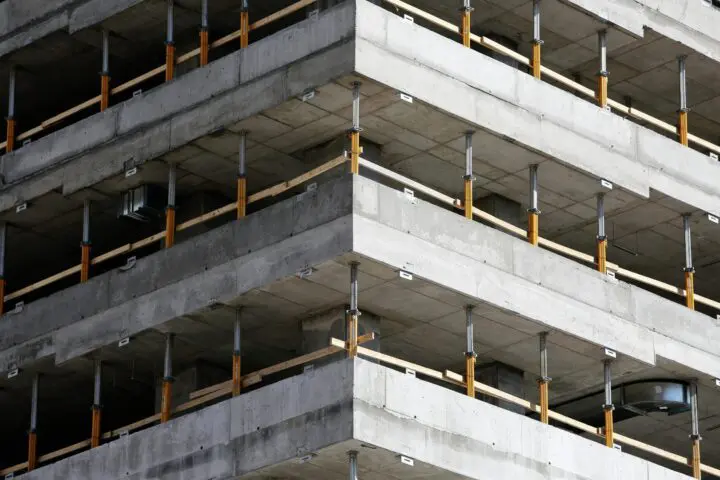2021 Trends in Professional Liability Insurance
Together with the American Council of Engineering Companies, the National Society for Professional Engineers, and the American Institute of Architects, the AIA Trust participates in an annual insurance carrier interview and review of professional liability trends and risk management issues.
Text
Together with the American Council of Engineering Companies, the National Society for Professional Engineers, and the American Institute of Architects, the AIA Trust participates in an annual insurance carrier interview and review of professional liability trends and risk management issues. Here’s a summary of the fall 2021 review.
-
Lack of design professionals → Increasing claims
A shortage of both design professionals and skilled labor is setting up a situation for deficiencies, and ultimately, will be driving claims. As people assume roles in which they may not be fully qualified or may lack significant experience, risk will increase. This includes both technical and non-technical areas. This scarcity of talent is part of the current social and economic climate but may also be a residual effect from the lack of architects entering the profession during the last major recession of 2007-2009.
Insurance carriers will be examining staff to revenue ratios, and not simply staff turnover, as a key risk measurement. Poor communication, insufficient documentation, and incomplete quality control were cited as the leading reasons for increasing claims. Many claims are now presenting as a result from projects in 2015-2017, and there is anticipation for a continued rise in claims.
Increased attention to quality control was a primary recommendation for risk management on this issue. A flexible work environment and schedule can be a way to improve staff retention. Professional development for staff and reviews of the claims history of new staff are additional investments to consider. Some insurers, such as Victor, now provide provisions to include insuring independent contractors.
-
Professional Liability Insurance (PLI) Rates: Hardening of the Market
Currently, there are no targeted rate increases for professional liability insurance because there is a great deal of competition among insurance carriers, many carriers cited a coming trend that they are or will increase rates. Each insurance carrier has their target market based on profitability, performance, and predictability. The annual revenue range of $1MM – $2MM was noted as the point where there are usually “growing pains” which tend to level off at the $3MM range.
 The coming trend of increasing rates is attributed to several factors: this market historically struggles with profitability, increasing jury verdicts and defense costs, social inflation, and economic inflation. Increasing frequency and severity of catastrophic events is also putting pressure on pricing. It was suggested that some carriers may refuse to insure, or be willing to offer large limits, or will continue to reduce their capacity.
The coming trend of increasing rates is attributed to several factors: this market historically struggles with profitability, increasing jury verdicts and defense costs, social inflation, and economic inflation. Increasing frequency and severity of catastrophic events is also putting pressure on pricing. It was suggested that some carriers may refuse to insure, or be willing to offer large limits, or will continue to reduce their capacity.
Increasing deductibles is seen as a way to buffer the potential increase in rates. A recommended target deductible was noted between 0.5-1% of billings.
The worst years recently have been 2015 through 2017, with claims typically coming three to five years after project completion. Reinsurers are looking at the long-term record of A&E PLI.
Future increased infrastructure spending will also affect this area. Structural engineers were repeatedly cited as the discipline with the most claims activity and severity, followed closely by geo-technical firms. Also anticipated: climate change and future weather uncertainty will impact the insurance industry and result in significant exposures to A&E.
-
Project Delivery Methods
Protecting design in collaboration/coordination arrangements is increasingly important. However, Design-Build versus Design-Bid-Build does not necessarily present higher risk. For Design-Build, it is important to carefully assess the contractor and examine their experience and avoid low-cost delivery selection, but the majority of insurance carriers are not tracking delivery methods as a major indicator of risk. Design-Build processes of bidding out with early documents tends to increase risks. In some cases, Design-builders are losing money on GMP driven projects and passing losses down to the design team.
For large infrastructure construction, project policies are being used more and the obligations are getting passed downstream which is dragging out claims; however, insurers are writing less of these.
Some recent patterns suggest A&E are absorbing the blame for cost overruns and the project specific policy is seen as the source to allow contractors to make up revenue. Insurance carriers are also seeing an increase in design professionals tendering to subconsultants. In general, DB is growing increasingly popular, but frequency and severity of claims is expected to increase. It was noted that the problems with this method of delivery primarily derive from insufficient comprehension and consistency in owner and other stakeholder expectations governing both design and construction. Improved communication, collaboration, and a partnership approach to working with the construction industry are ways to mitigate project delivery risk.
Learn More:
Risk report: The Risks and Rewards of Integrated Project Delivery (IPD)
Webinar: IPD Risks and Rewards
Article: Project-Based IPD Insurance Coverage
-
Condominium Risks: Surfside & Beyond
Based on the Surfside disaster in June 2021, we do not yet know the full range or depth related to condominium failure but can be nearly certain that more claims and impacts will come.
In general, carriers will be monitoring closely as new behaviors and regulations evolve. There may be additional increases in Authority Having Jurisdiction (AHJ) to enforce the requirements of a code or standard, or approve equipment, materials, procedures, etc. There will likely be an increase in structural studies, and there may be an increased frequency of claims for deficient structures. How peripheral or adjacent projects will be scrutinized in the future must also be evaluated for their potential effects on other structures.
 Whether there can be immunity for inspectors (“don’t shoot the messengers”) is unknown but should be considered. There will likely be condominium board management legislation as a result with the goal of making condo associations behave responsibly along with their constituents who must adhere to the decisions made, such as necessary assessments to protect the building and its occupants.
Whether there can be immunity for inspectors (“don’t shoot the messengers”) is unknown but should be considered. There will likely be condominium board management legislation as a result with the goal of making condo associations behave responsibly along with their constituents who must adhere to the decisions made, such as necessary assessments to protect the building and its occupants.
Broadly, as condos present some of their greatest risk, carriers often discourage or limit their capacity and exposure in this project type. For carriers who do not discourage taking on condo projects, they will address exposure and how an insured’s premium may be affected. It was noted that combined hotel/condo projects can be seen as less risky particularly where the hotel is responsible for building maintenance.
Learn More:
Risk report: If You Build It, They Will Sue: A Report on Condominium Project Risks
Webinar: Condominium Projects Webinar
Article: Four Keys to a Successful Condominium Project
-
Pandemic Issues
Similarly, on the topic of the pandemic, supply shortages and supply chain disruption present multiple concerns. Cost overruns and the increasing cost of steel, for example, could present challenges. Design professionals will likely face standard of care/liability issues as they relate to the pandemic and cost escalations and supply.
Mechanical engineers will likely face a higher standard of care for filtration and air flow systems.
HVAC / CDC Guidelines have not been elevated to the standard of care nor become a claims issue yet but it is important not to make promises and to know that it may increase the standard of care in the future.
Learn More:
Risk report: Firm Management Strategies
Article: Pandemic Risks to Your Firm
Article: Videoconferencing Can Raise Professional Liability Exposures
-
Cyber Risks
An increase in ransomware attacks and breach of systems exist in nearly every industry today. Those firms that store a lot of data, or that work on projects with considerable private data (e.g., schools, hospitals, embassies) are at greater risk and should have separate, stand-alone policies. Cyber and network security are real needs and current risks for design professionals, particularly as technology use in the industry increases. Wire transfer payment fraud and other attacks could represent significant disruption and costs.

An electronic documents model – to the extent outsiders could access and manipulate the documents – can pose considerable inherent risks to the design firm. There is increasing sophistication of cyber-attacks and a great deal of uncertainty about what is covered with cyber policies which are also progressively changing. It remains important to be educated to understand what the risks and coverage really are and to obtain third party coverage.
Professional services firms may lag behind other entities in establishing security practices and protocols, because until more recently, they have not been under attack. Generally, A/E has not been as significant of a target for cyberattacks since firms do not generally gather a large amount of confidential data. Firms with dedicated cyber policies will benefit from more protection and help the industry remain a relatively lower target than other industries.
Learn More:
Risk Report: The Threat is Real: Cyber Attacks Against Architectural Firms
Guide: An Architect’s Guide to Buying Cyber Liability Coverage
Guide: An Architect’s Guide to Managing Cyber Threats
Webinar: Get Ahead of Cyber Risk
Article: Take Cyber Liability Exposures Seriously
Article: Protect Your Firm from Ransomware Disaster
Tool: Cyber Risk Assessment
-
Sustainability
Actions of an architect are measured against the applicable standard of care. The Standard of Care will continue evolve as practices especially regarding sustainability continue to change. It is important not to make a warranty or guarantee for new practices. More jurisdictions are adopting green codes and green design is becoming the standard, but universal language is difficult to provide as requirements vary across all 50 states. Environmental, social, and governance (ESG) criteria are a set of standards for an organization’s operations that socially conscious investors are increasingly utilizing and which may start to be a differentiator, impacting financing and opportunities.
While the green design movement has grown over the last 25 years, there has not been a flood of litigation nor a drastic change in the design professional standard of care. It appears that design professionals now have an obligation to inform the owner of, and to implement, optional and mandatory green requirements. Green is thereby becoming part of the standard for architects and there are resulting “new” risks for architects arising in green building which adds challenge and complexity.
Climate uncertainty could be an area of increased risk management. Due to the unknowns of a changing climate, buildings may need to be capable of withstanding more severe storms and fluctuation of temperatures. Combined with inadequate infrastructure, the FEMA floodplain designations may no longer be reliable. The A/E industry must continue to work toward resiliency in the design of buildings and communities.
Learn More:
Risk Report: Green Design – What Can Go Wrong?
Article: Protecting Your Firm When Going Green
Risk Report: A Sustainable Standard of Care?
Article: Relying on Manufacturer Representations
Article: Materials Transparency: Opportunities and Risks
Additional Topics
- Artificial Intelligence was not seen as a significant risk management issue. Leveraging AI tools in the design process is seen as a benefit, but carriers prefer clients to consider being on the cutting edge – not the bleeding edge – of technology.
- Model as Deliverable was discussed as being more prevalent in delivery. Recommend a robust digital agreement, and if the design model becomes the contractor’s model, it reduces the A/E risk.
- Cannabis Facilities were discussed but not seen as a much different risk from other manufacturing processing facilities. Settlement of client payments is more of an issue due to financial transaction issues.
Conclusion
In summary, the areas of highest risk for the A/E industry continue to evolve, and the insurance industry is evolving with it. Most insurers also will offer risk management assistance, such as first-dollar defense and pre-claims assistance, in the case of a rising claim. Ultimately, communicating and managing client expectations is the best risk management approach. Connect your client’s expectations to be in line with the standard of care, and proactively utilize the available risk management resources from your professional liability insurance carriers, as well as the resources found within the AIA and the AIA Trust.
More on Professional Liability

2024 Professional Liability Trends Every Architect Should Know
News ▪ April 2025
Ethical challenges of generative AI in architectural practice
News ▪ February 2025
Pitfalls of the Profession by LegaLine
Components ▪ Contracts ▪ Legal ▪ Professional Liability ▪ Professional Practice ▪ Risk ▪ Small Firms ▪ Webinar